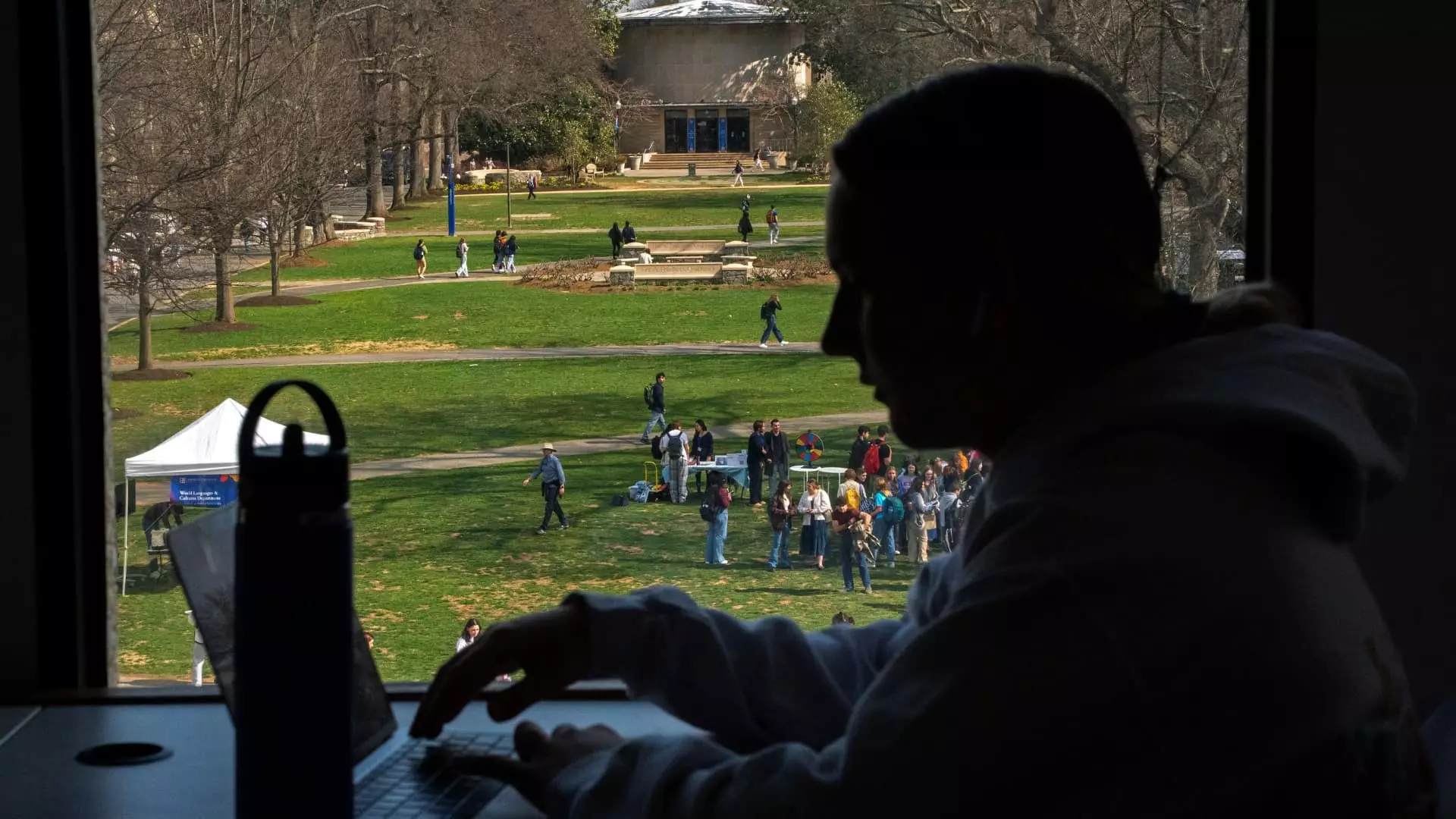In an alarming development for millions of Americans burdened by student debt, the Federal Reserve Bank of New York has projected a dramatic deterioration in credit scores for over 9 million borrowers who are expected to miss payments. According to a report released on March 26, 2025, many of these individuals could witness their credit scores plummet by as much as 171 points. The statistics paint a grim picture, highlighting the profound and immediate impact of loan delinquency on borrowers’ financial futures, particularly those previously enjoying the highest credit ratings.
The implications of these potential score declines are severe. Credit scores—which govern one’s access to affordable loans—are critical not only for securing mortgages or car loans but also directly influence interest rates. A good score (typically 670 or higher) confers significant financial advantages, including the ability to borrow money under favorable terms. As we inch closer to the end of the pandemic assistance, borrowers are placed on the precipice of a financial cliff, which raises concerns about their long-term economic viability.
The Fallout from Current Policies
It’s important to contextualize this looming crisis within the broader landscape of student loan management. For years, borrowers benefited from a suspension of collection activities due to the pandemic’s unprecedented challenges. However, this relief came to a close on September 30, 2024, marking a painful return to reality. For many, this return is not merely a bump on the road but rather a catastrophic jolt that threatens to unwind years of financial stability.
Indeed, the stark reality is that collections could resume with ruthless efficiency, dragging many into a cycle of wage garnishment and long-lasting financial repercussions. Doug Boneparth, a financial planner, states the obvious but too often ignored point: Late payments will reduce access to affordable credit, effectively enslaving borrowers within a web of increasingly expensive debt. In a nation where the cost of living is prohibitive, and wage growth has stagnated, such dire consequences could push many into a state of perpetual financial chaos.
Available Solutions and the Dissonance of Reality
Despite this impending doom, there are strategies intended to cushion the blow for struggling borrowers. Consumer advocates argue that exploring income-driven repayment plans could help many reduce their monthly payments significantly, or even to zero. Notably, this option aims to protect against default thresholds but fails to account for the overwhelming stress and anxiety it places on individuals who already find it difficult to navigate the complexities of their debt obligations.
Additionally, options like deferments and forbearances appear to offer temporary respite, allowing borrowers to stall their payments while keeping late flags off their credit reports. However, while a quick pause may seem advantageous, it effectively writes a temporary solution on an already fragile foundation—these measures won’t eliminate debt but merely push the concerns down the road.
In a financial landscape where education is seen as a pathway to economic freedom, the irony of accruing debilitating debt for the promise of prosperity is troubling. Many borrowers may find themselves stuck in a system designed with neon signs steering them to ruin.
The Importance of Vigilant Monitoring
Experts urge borrowers to remain vigilant, emphasizing the importance of regular credit report checks to ensure accuracy across agencies like Experian and Equifax. But can checking a report feel like anything other than a symbolic gesture? As troubling estimates loom large on their finances, fears of incorrect balances are likely the least of their concerns. Striving for greater financial literacy and empowerment seems vital, but systemic issues in student lending must also be aggressively reexamined and addressed.
The environment surrounding student loans is undoubtedly toxic, ensnaring young adults in a cycle of debt that often feels inescapable. As financial well-being becomes increasingly tied to credit score health, the responsibility shifts to policymakers and educational institutions to acknowledge their roles in perpetuating this crisis. The upcoming wave of potential credit score declines is a call to action that cannot be ignored. The time has come for meaningful policy shifts, not merely band-aids on a hemorrhaging system. Addressing the roots of this crisis may be the only way to foster sustainable financial futures for millions of Americans.

